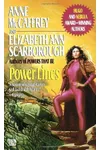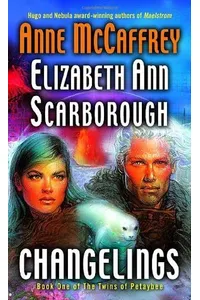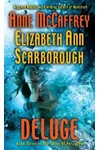Step into the icy, enchanting world of Petaybee, where a sentient planet pulses with life and a retired soldier finds her true calling! The Petaybee series, a captivating blend of science fiction and fantasy by Anne McCaffrey and Elizabeth Ann Scarborough, follows Major Yanaba Maddock as she uncovers the secrets of a frozen world and fights to protect it from corporate greed. This lesser-known gem sparkles with themes of environmentalism, cultural unity, and personal transformation, inviting readers to a universe as vibrant as it is chilling.
With its unique premise of a living planet and a heroine who defies expectations, Petaybee offers a thrilling escape for fans of socio-political sci-fi and heartfelt adventure. Let’s dive into the origins, stories, and lasting allure of this remarkable series!
How Petaybee Began
Anne McCaffrey, famed for her Dragonriders of Pern, teamed up with Nebula Award-winner Elizabeth Ann Scarborough to craft the Petaybee series in the early 1990s. Inspired by their shared love for ecological themes and strong female protagonists, they envisioned a world where a planet itself could be a character. Petaybee, a terraformed arctic world settled by Inuit and Irish descendants, emerged as a vivid setting that blended Celtic and Inuit lore with futuristic stakes. Their collaboration produced a seamless narrative, with McCaffrey’s world-building flair complementing Scarborough’s knack for emotional depth.
The Heart of Petaybee
The Petaybee series spans two trilogies: the original Petaybee trilogy and the Twins of Petaybee. The first book, Powers That Be (1993), introduces Yanaba Maddock, a disabled combat veteran sent to spy on Petaybee’s natives for the Intergal Corporation. As Yana’s health miraculously improves, she discovers the planet’s sentience and joins its people to resist exploitation. Power Lines (1994) sees Yana fully integrated into Petaybee’s culture, rallying to prove the planet’s consciousness to skeptics. Power Play (1995) escalates the stakes with Yana’s kidnapping, as Petaybee itself begins to speak, defending its future.
The Twins of Petaybee trilogy, starting with Changelings (2005), shifts focus to Yana’s children, Ronan and Murel, telepathic shapeshifters who navigate new threats to their home. Themes of environmental stewardship, cultural respect, and personal growth weave through both trilogies, grounded in Petaybee’s icy landscapes and its inhabitants’ symbiotic bond with their world. The series’ socio-political sci-fi is laced with fantasy elements, like selkie myths and a planet that communicates through caves, making it a standout in the genre.
The storytelling is light yet thought-provoking, balancing adventure with reflections on corporate overreach and ecological balance. Fans praise the vivid world-building and Yana’s evolution from soldier to advocate, though some note the romantic subplots, like Yana’s with geneticist Sean Shongili, feel rushed. Still, Petaybee’s charm lies in its heartfelt exploration of community and resilience.
Why Petaybee Resonates
Though not as famous as McCaffrey’s Pern, Petaybee holds a special place in sci-fi and fantasy circles for its prescient environmental themes and diverse cultural influences. Its focus on a sentient planet anticipates modern eco-fiction, while Yana’s journey inspires readers seeking stories of second chances and moral courage. The series’ niche status only adds to its allure, offering a hidden treasure for those who love immersive, character-driven tales. Fan reviews on platforms like Goodreads highlight its “captivating” world and “hopeful” tone, cementing its quiet but enduring impact.
- Publication Years: 1993–2007
- Books: Six (three in Petaybee, three in Twins of Petaybee)
- Awards: Powers That Be nominated for 1994 Locus Award for Best Science Fiction Novel
Ready to brave the icy winds of Petaybee? Grab Powers That Be and dive into a sci-fi adventure where a planet’s heart beats as fiercely as its people’s!





